Keep Your Cool
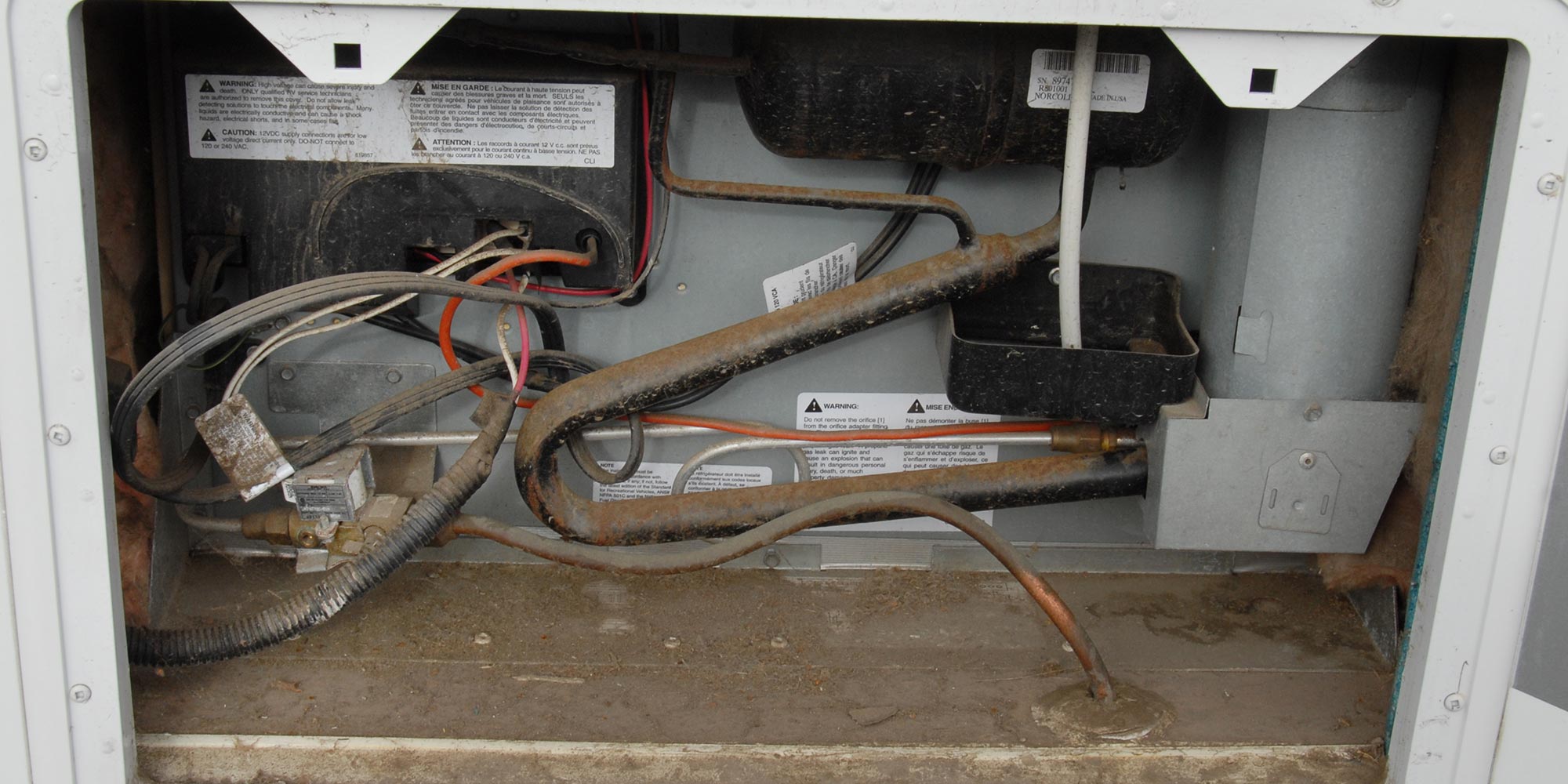
Offsite storage in windy/dusty areas can make dirt accumulate quickly. In a compartment like this, wipe or sweep the area clean with dustpan broom first. Then, if you have access to compressed air, blow the area clean. If you don’t, a can of compressed air that is commonly used to clean office equipment can also work.
Simple fixes for non-functioning fridges
A non-functioning refrigerator can throw a wrench into your travel plans–but there is hope. Unless your refrigerator is due for replacement, the problem is very likely fixable in your own driveway, in an hour or less.
So, let’s get back to basics. The two essentials an absorption refrigerator (the most common type) needs to operate are ignition and fuel. First, verify that your battery (or batteries) are sufficiently charged; a few months in a storage yard can drain it/them even if you’ve disconnected the cables. Then, after verifying that your LP-gas cylinder (or cylinders) have sufficient propane, turn the cylinder(s) on and go back inside the RV. Because the stove uses far more LP-gas than does the refrigerator, it’s a good place to purge the line of air and verify LP-gas flow. If the stove lights, then you can move on to switching on the refrigerator.
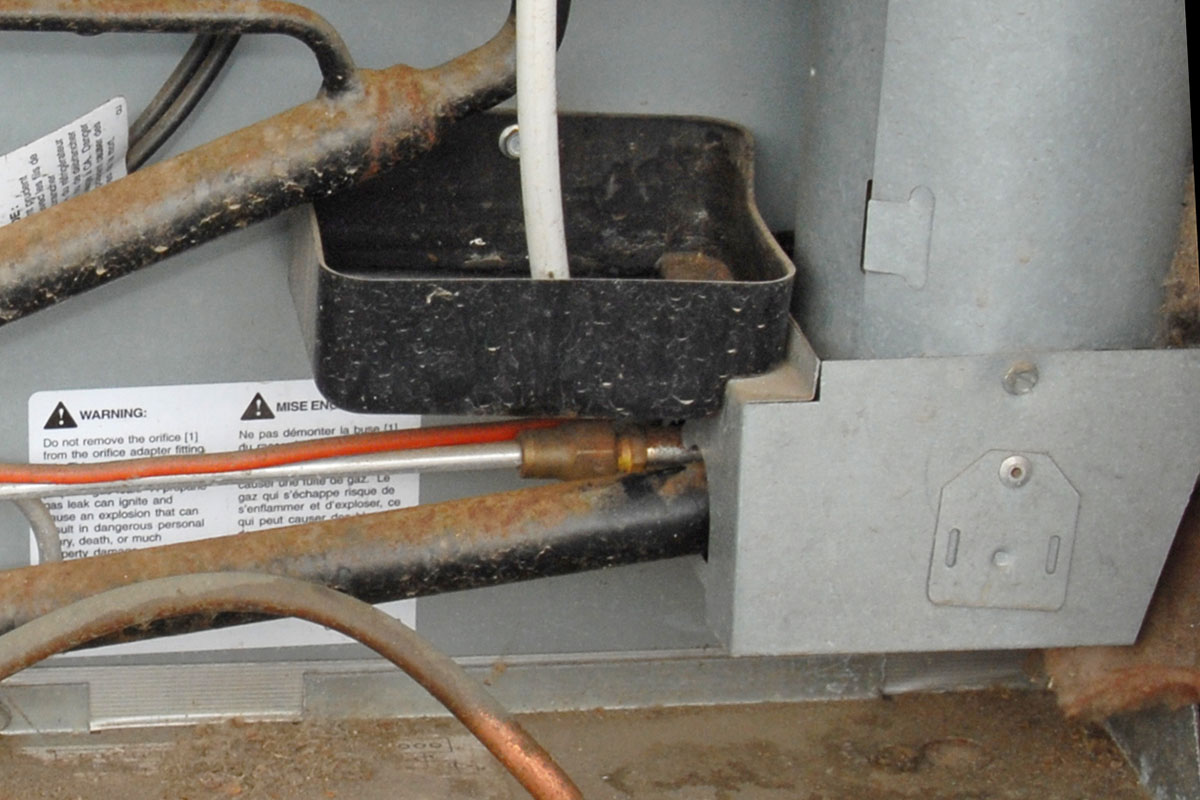
Offsite storage in windy/dusty areas can make dirt accumulate quickly. In a compartment like this, wipe or sweep the area clean with dustpan broom first. Then, if you have access to compressed air, blow the area clean. If you don’t, a can of compressed air that is commonly used to clean office equipment can also work.
The problem is very likely fixable in your own driveway, in an hour or less.
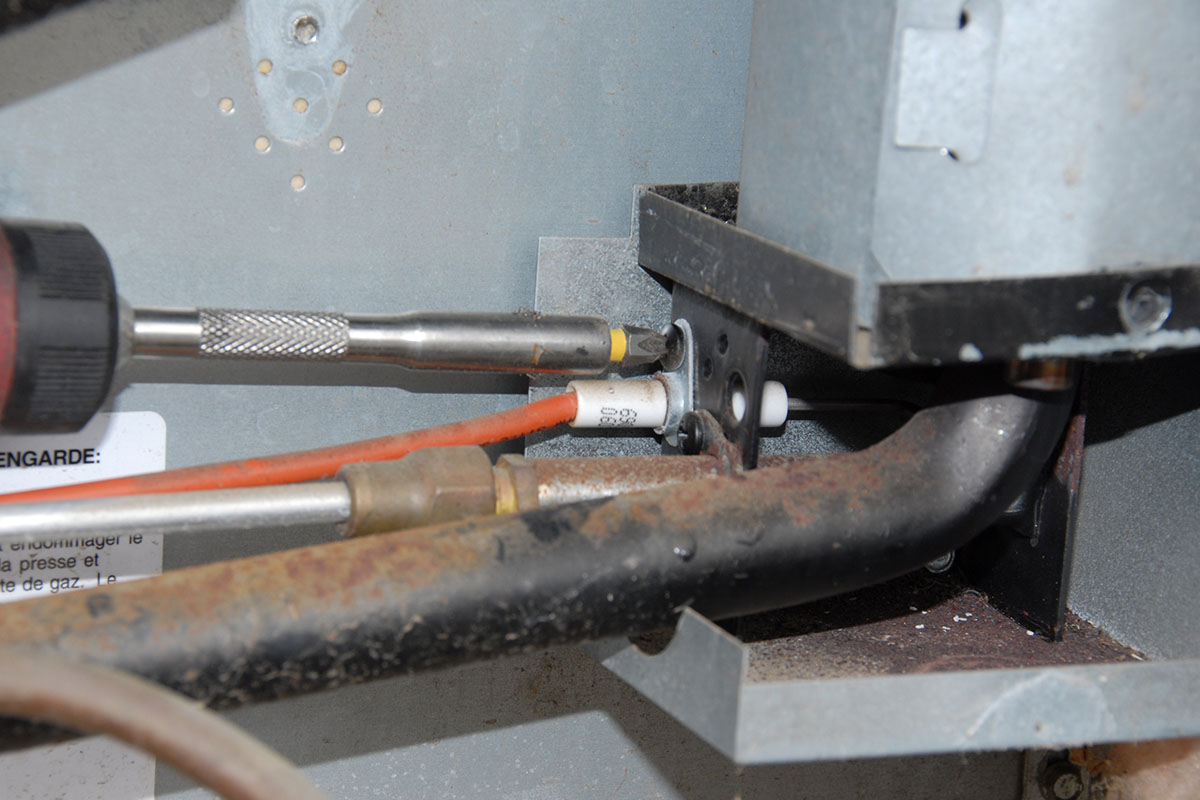
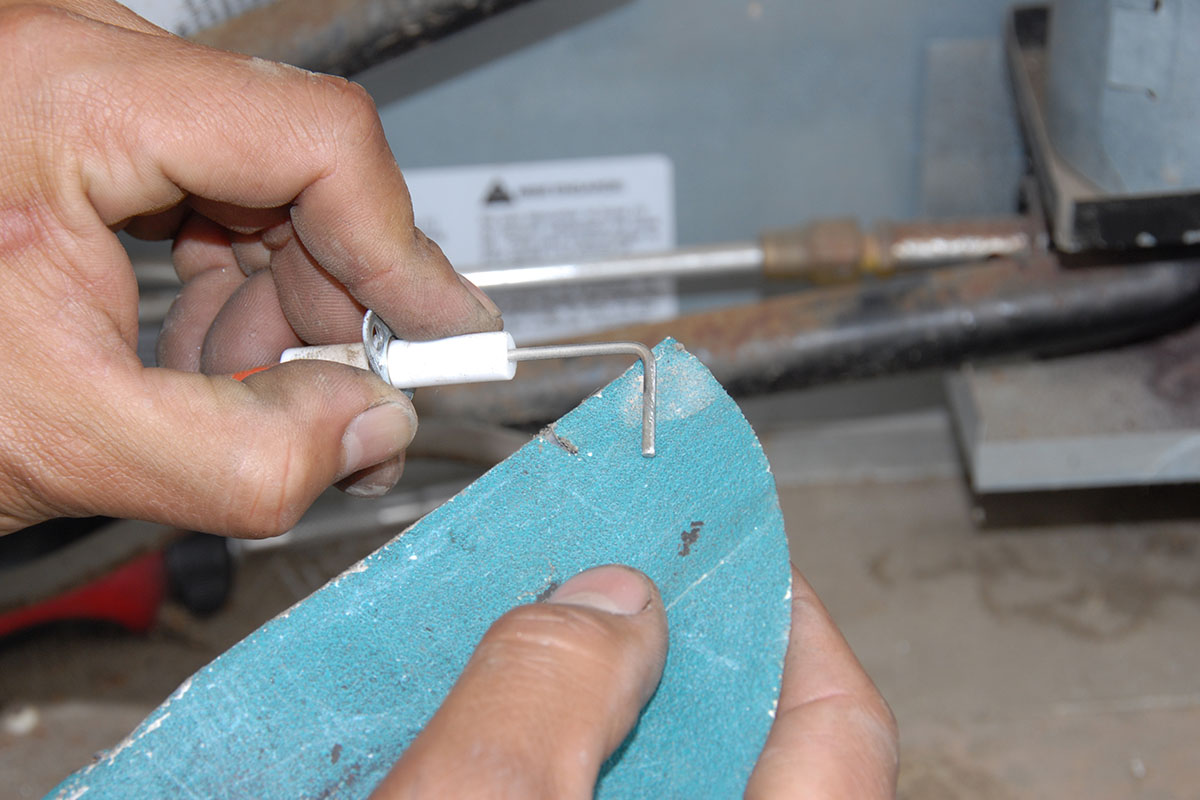
Remove the screw that secures the igniter. Once it’s out, inspect it closely for built in carbon on the tip. The igniter is like a spark plug; when it’s dirty, it doesn’t function very well. But also like a spark plug, it’s function can be restored by using a piece of sandpaper or emery cloth to remove the carbon buildup. Blow the flue and burner tube clean, and re-assemble.
When you push the “On” button on a typical absorption refrigerator, you start a chain of events. The propane begins to flow to the burner tube, then the igniter receives 12-volt DC current and creates a spark that lights the flame, which isn’t much bigger than the one from a cigarette lighter. But, if the igniter doesn’t spark, there’s no flame and nothing will get cold. In this case, the problem is usually either a burner tube that is blocked by an insect’s home, and/or an igniter that is so covered in carbon that it can’t make contact and create a spark anymore.
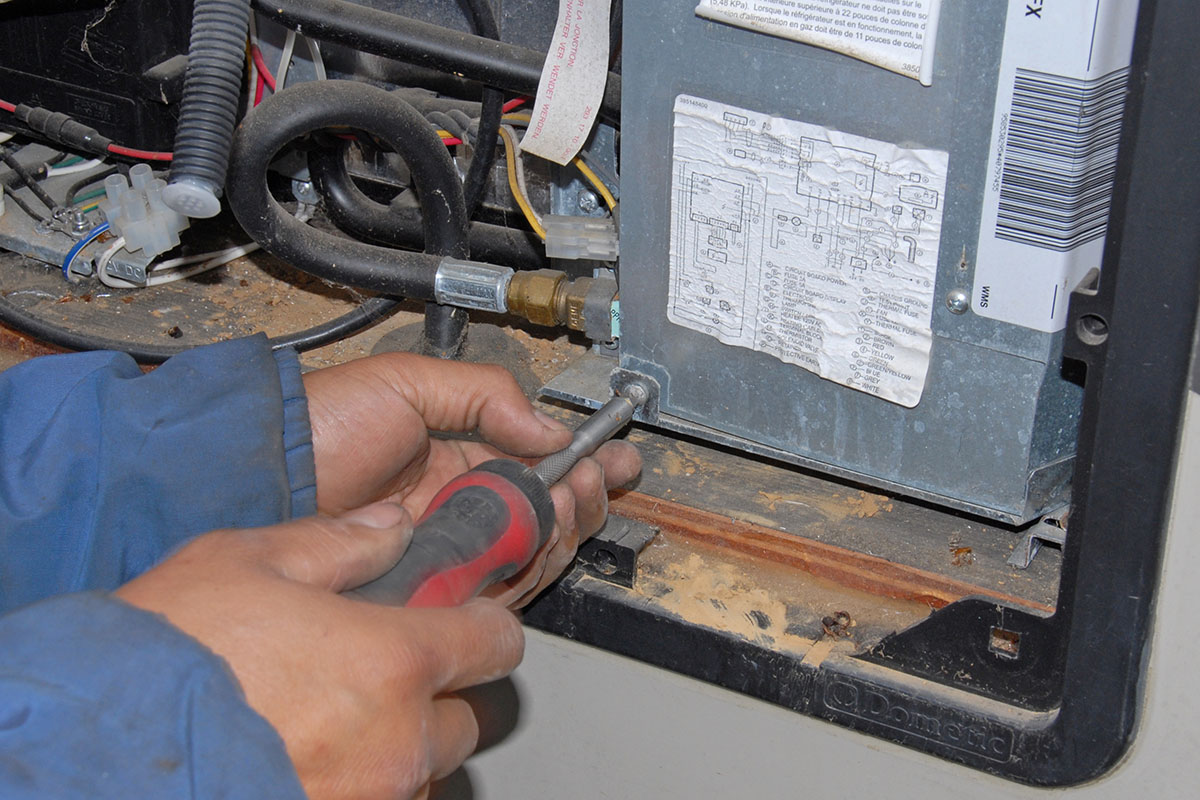
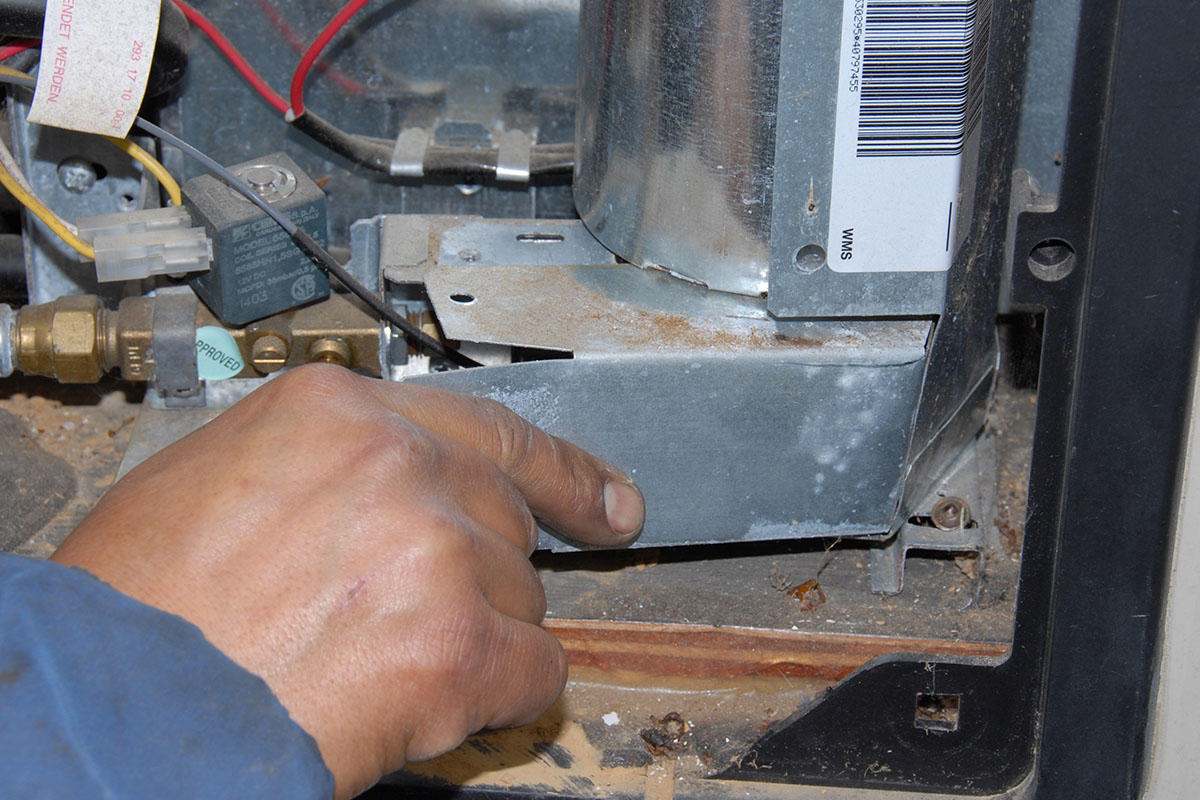
Remove the screw that secures the igniter. Once it’s out, inspect it closely for built in carbon on the tip. The igniter is like a spark plug; when it’s dirty, it doesn’t function very well. But also like a spark plug, it’s function can be restored by using a piece of sandpaper or emery cloth to remove the carbon buildup. Blow the flue and burner tube clean, and re-assemble.
Now, if the refrigerator does light, but after a few hours there’s no cooling of the floor plate in the freezer, you smell ammonia and/or hear a gurgling sound from the back of the refrigerator, turn the unit off immediately and seek the assistance of a certified RV technician or factory appliance service center. In most cases, however, the following steps will likely help you get your refrigerator running on LP-gas again, and get things cool again in no time.
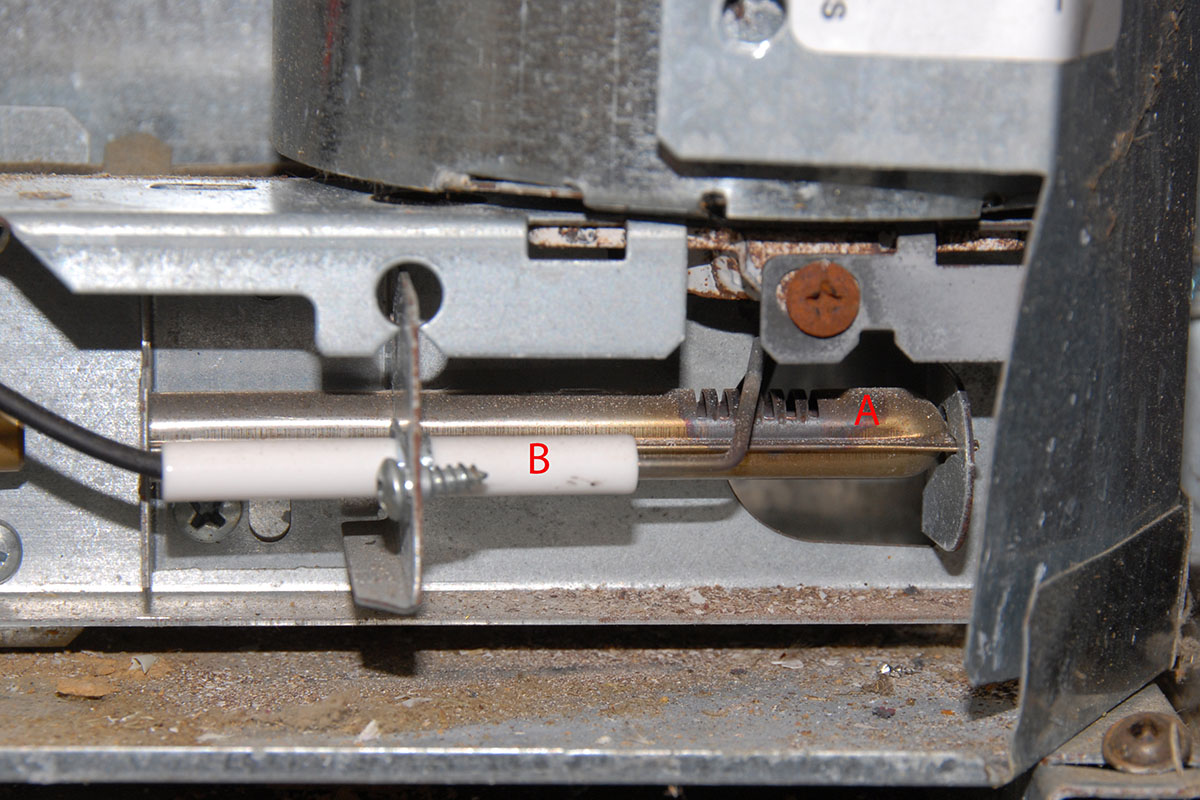
Here, you can clearly see the burner tube (A) and that it is clean and free of cob webs or other signs of insect intrusion. The igniter (B) is located below.
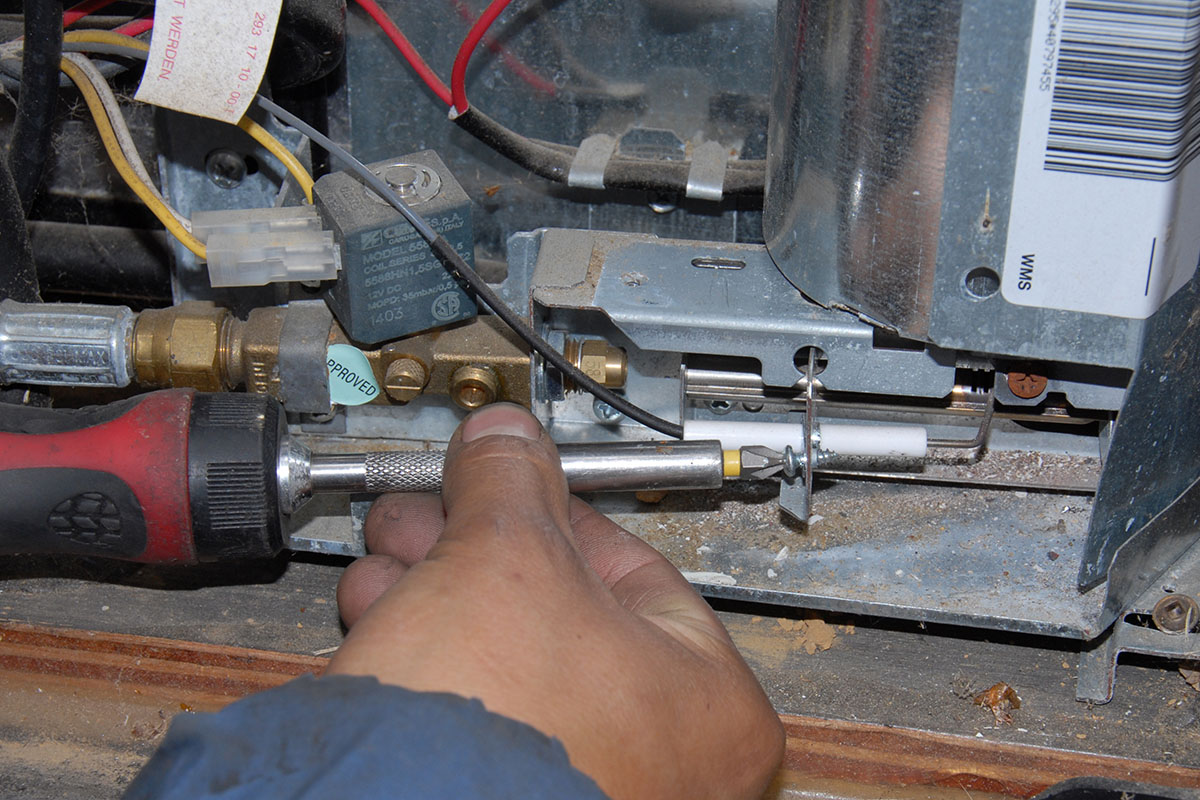
One screw holds the igniter in place. Clean as necessary, then re-assemble.
Photos by author
Get Updates
Subscribe today and never miss an issue!
Get all the latest tips and news to keep you moving on that open road!
Current Issue
January/March 2024
Spring is back in bloom and with it we are proud to present our latest issue of RV Enthusiast! The January/March issue covers furnace failures and how to fix them, the best batteries for boondocking, quick and easy weekend projects, PLUS so much more!
Already a Subscriber? Click here for Access to the Full Issues.

